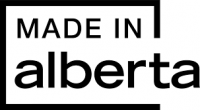Alberta’s Ministry of Agriculture and Forestry announced in July that local produce could soon carry a little sticker with these very words.
This label, which can be used throughout the food system—farmer’s markets, grocery stores and restaurants, for example—will be a key piece of information generated by producers to communicate the evidence in which they are highly interested. There are a variety of reasons for consumer interest in local food, such as freshness and a sincere desire to support local producers.
It is worth mentioning that other provinces have similar programs. For example, Foodland Ontario has been around since 1977, and BC reintroduced a Buy BC program in 2018 after an almost ten years hiatus.
Do these programs benefit producers and consumers? Most research shows that that they are effective from the standpoint of consumer awareness and sales of products. For example, Foodland Ontario noted that over 90% of Ontario consumers are familiar with and value the Foodland Ontario logo. A benefit of using a common logo throughout the food system may be increased awareness of the range of foods produced in Alberta throughout the year.
Throughout the pandemic consumers have increased their demand for ‘local’ foods, partly in response to concerns about shortages but also through a desire to shorten the food supply chains… have fewer steps and fewer hands between producer and consumer. A 2021 AgriNovus report on the impact of the pandemic on Indiana agribusiness highlighted the increased importance of transparency and traceability to the future resilience of the sector. If consumers want ‘local’, they also want to know that ‘local’ is verified and can be traced through supply chains. This means an increased focus on traceability systems will naturally accompany the application of local food branding. The AgriNovus report highlighted the variety of technologies which can enhance traceability, including genetic tracing, block chain, near-field communication (NFC), radio-frequency identification (RFID) and the Internet of Things. These technologies can make the operation of multiple supply chains for identity-protected products more efficient and provide guarantees to customers and consumers. Whether buying local means visiting a u-pick, a farmers’ market or a supermarket, traceability can support a Made in Alberta by Albertans identification program.
A few years ago, we studied Canadian consumer interest in genetic or RFID traceability systems in pork. At that time, traceability back to farm of origin was highly valued by Canadian consumers, with a preference for the use of genetic traceability over RFID systems. It will be interesting to monitor the roll out of the Alberta program across commodities and to assess the role of genetic technology in enhancing the labelling/identification program. Research suggests that this use of genetic technology generates few concerns for the public.

